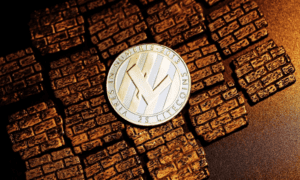People over the years have been confused between natural and lab-grown diamonds. Especially while making a decision to buy either, the choice gets tougher as one needs to know everything there is about both options. The most important factor is durability. Today we’re going to take a brief look at the differences, similarities and durability factors of both types of diamonds.
- What are natural diamonds?
Natural diamonds, also known as organic diamonds are found beneath the surface of the Earth. They have to be mined out using heavy machinery and tools. The natural diamonds that we have today were formed millions of years ago as a result of high temperatures and intense pressure conditions under the surface of the Earth. When the carbon is mixed with other chemicals or impurities, the diamonds get certain colours and we get what is now known as coloured diamonds.
- What are lab-grown diamonds?
Lab-grown diamonds are created by man in a laboratory or factory. Conditions similar to natural diamonds are recreated by adding high heat and extreme pressure to carbon particles and diamond seeds in an enclosed chamber. The particles fuse together to form diamonds then. The two most common methods used to do this are the HPHT (High-Pressure High Temperature) and the CVD (Chemical Vapour Deposition). The result is a diamond that looks indistinguishable from natural diamonds. The process takes around 2 months to complete, which is much faster than the natural diamond making process.
- Similarities
Contrary to popular opinion, lab-grown diamonds are real diamonds too. Although they have been created by man, they have the exact same atomic structure, appearance, chemical composition and other qualities of natural diamonds. Man has perfected the techniques over the years to compete with nature and create an exact replica of the diamonds which is as real as it can be. They are so real that even trained gemologists cannot tell the difference with the naked eye. You need an expert to do a proper inspection through microscopic tools to determine whether the diamond is lab-grown or natural. Since the time taken to create the lab-grown diamonds is significantly lesser, they are priced lower which makes them a wonderful choice for lab grown diamond rings.
- Durability Factors to Consider
- Diamonds do not get cloudy or lose their sparkle over a period of time. Both lab-grown, as well as natural diamonds, have the exact same physical and optical structure which means there is no loss in their shine even decades after they are purchased. Any dirt or build-up can be easily cleaned using warm soapy water.
- Hardness. Diamond is considered to be the hardest element on Earth. This rule applies to both lab-grown and natural diamonds. They measure the same in hardness. The MOHS Hardness Scale is used to measure the hardness of any substance in the world and diamonds rank the highest, i.e. they rank at 10 on this scale. This makes them extremely durable. Both kinds of diamonds are the exact same when it comes to durability and can last long enough to be passed down to future generations. This is the reason heirloom jewellery is almost always made of diamonds.
We’re hoping this helped to clear your doubts. If yes, then you might now be finding it easy to make the right choice for your jewellery. You can find amazing varieties of both kinds of diamonds in Jewelers in Hatton garden when you are planning a trip to London.

















































